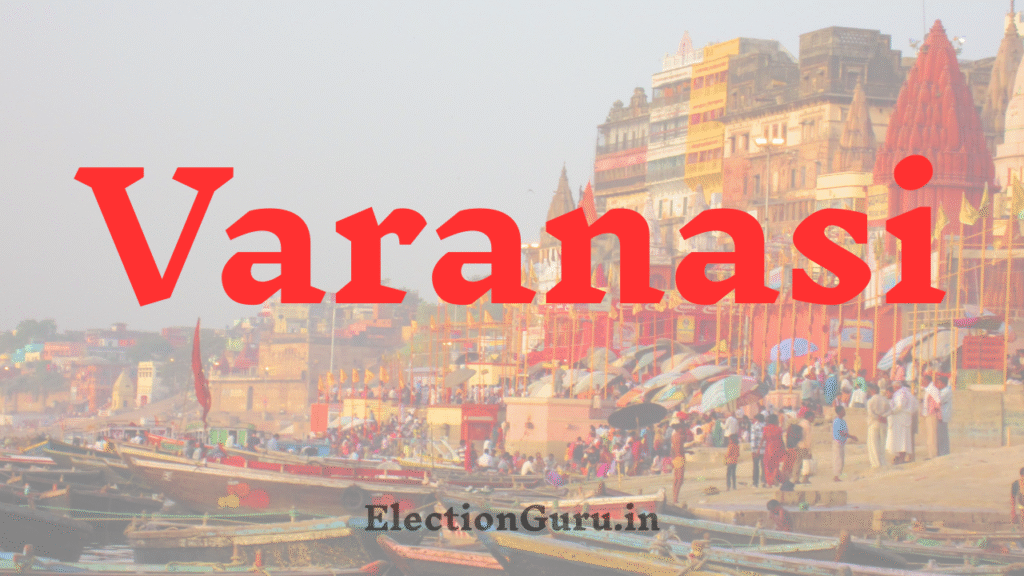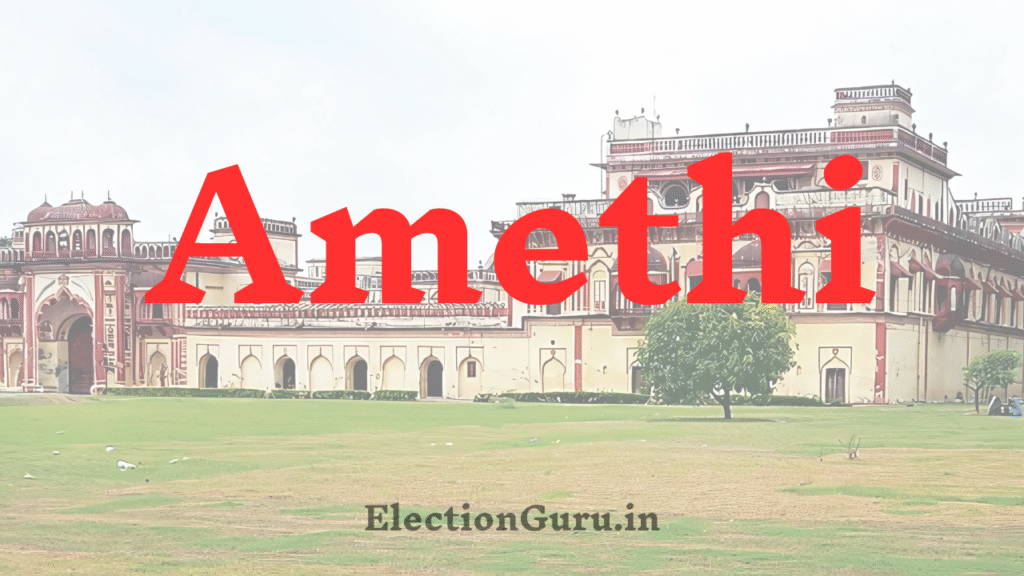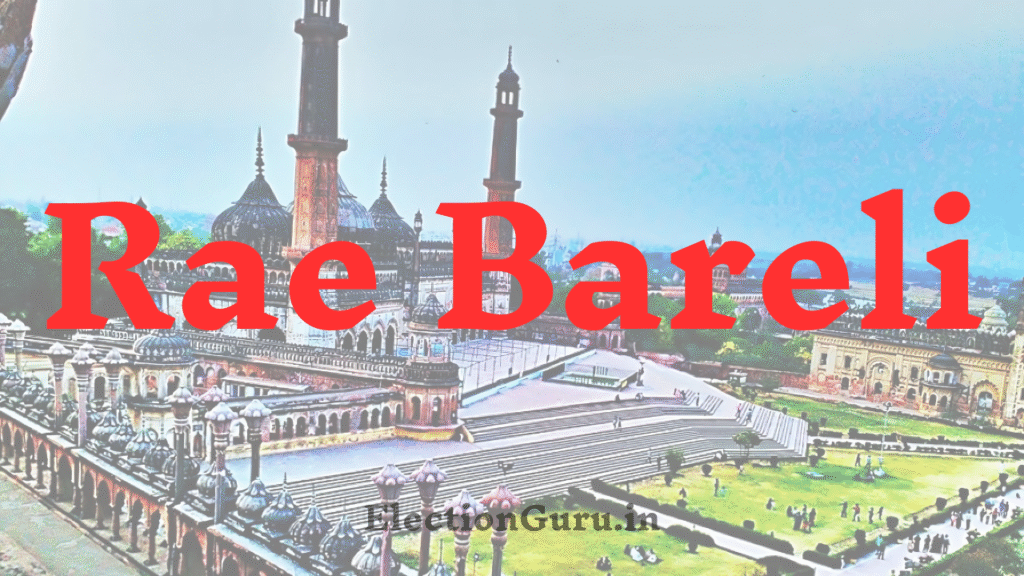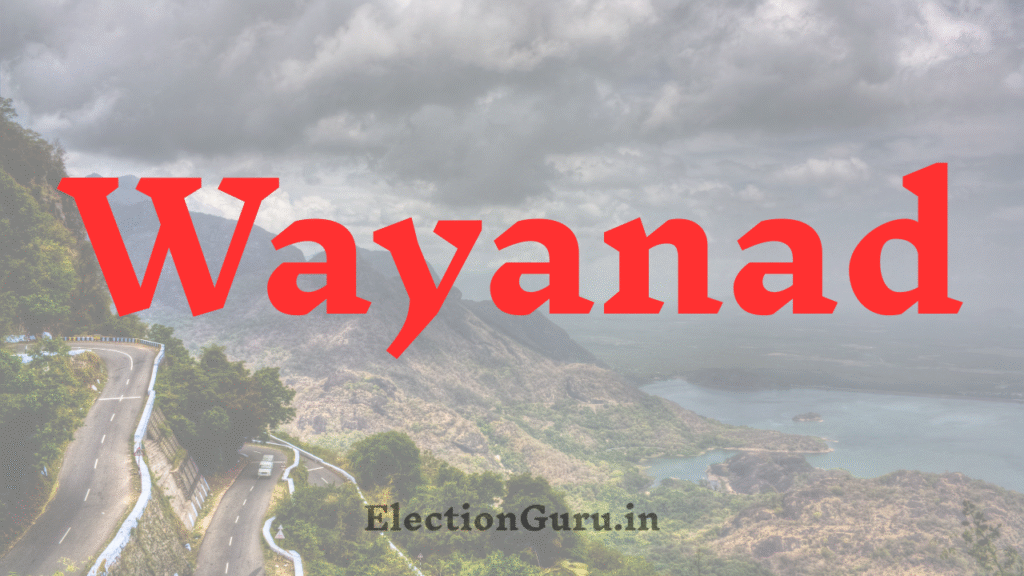Top 5 Lok Sabha Seats in India :- India’s democracy is known for its scale, vibrancy, and dynamic electoral battles. Among 543 Lok Sabha constituencies, some seats stand out — not just for their massive electorate, but also for their influence on national politics, media attention, and symbolic value.
These are constituencies where politics becomes an art of charisma, caste calculus, developmental promises, and mass mobilization. In this in-depth article, we explore the top 5 Lok Sabha seats in India, discuss their history, demographic profile, past results, and their importance in shaping national discourse.
Top 5 Lok Sabha Seats List
| Rank | Constituency | State | Approximate Voters (2024) | Current MP | Key Parties |
|---|---|---|---|---|---|
| 1 | Varanasi | Uttar Pradesh | 20 lakh+ | Narendra Modi | BJP, SP, INC |
| 2 | Amethi | Uttar Pradesh | 18 lakh+ | Kishori Lal | BJP, INC |
| 3 | Rae Bareli | Uttar Pradesh | 17 lakh+ | Rahul Gandhi | INC, BJP |
| 4 | Mandi | Himachal Pradesh | 15 lakh+ | Kangana Ranaut | BJP, INC |
| 5 | Wayanad | Kerala | 14 lakh+ | Rahul Gandhi | INC, CPI(M), BJP |
1. Varanasi: The Spiritual & Political Capital
Varanasi’s political journey is deeply rooted in its spiritual legacy. Known as Kashi, the city has been a center of learning and devotion for centuries. Its ghats, temples, and narrow lanes have seen the footprints of sages, poets, and reformers who shaped Indian thought and consciousness. Even during the colonial freedom struggle, Varanasi was a hub for nationalist movements and intellectual discussions, producing leaders who later played roles in independent India’s governance.
In parliamentary politics, Varanasi was initially a Congress stronghold, with leaders like Kamlapati Tripathi and others representing it in the 1950s and 60s. The city remained relatively low-profile until the Bharatiya Janata Party started gaining ground in Uttar Pradesh in the 1990s. However, it was the 2014 elections that truly transformed Varanasi into a national stage when Narendra Modi announced it as his constituency. His choice was not just strategic but also symbolic — merging spiritual India with the aspirations of a “New India.”
After Modi’s entry, Varanasi began to symbolize a new developmental narrative. The city saw rapid urban infrastructure projects, cultural revamps like the Kashi Vishwanath Corridor, and increased global attention. Varanasi evolved from being a spiritual capital to a showpiece of Modi’s governance model, embodying a mix of tradition and modernity.
Varanasi has a diverse population comprising upper-caste Hindus, non-Yadav OBCs, Muslims, and scheduled castes. Over 20 lakh voters create a complex caste-religion matrix.
| Community | Approx. Share (%) |
|---|---|
| Upper caste Hindus | 25% |
| OBCs | 35% |
| Muslims | 18% |
| Dalits | 15% |
| Others | 7% |
Recent Electoral Results
| Year | Winner | Party | Votes | Runner-up | Margin |
|---|---|---|---|---|---|
| 2014 | Narendra Modi | BJP | 5,81,022 | Arvind Kejriwal | 3,71,784 |
| 2019 | Narendra Modi | BJP | 6,74,664 | Shalini Yadav | 4,79,505 |
| 2024 | Narendra Modi | BJP | 6,12,970 | Ajay Rai | 1,52,513 |

Also Read : Ajit Pawar Net Worth in 2025: Political Journey, Assets, Income, Cars & Controversies Revealed
2. Amethi: The Former Congress Bastion
Amethi has been synonymous with the Gandhi family’s political legacy for over four decades. The seat gained prominence when Sanjay Gandhi, the younger son of Indira Gandhi, chose it as his base. After his tragic death in a plane crash in 1980, Rajiv Gandhi stepped in and turned Amethi into a personal bastion, winning over voters with promises of development and direct access to the central leadership.
In the years that followed, Amethi became a symbol of loyalty to the Nehru-Gandhi dynasty. Rajiv Gandhi’s personal connect with the locals, coupled with the family’s charisma, ensured successive victories. Even after Rajiv’s assassination, Sonia Gandhi and later Rahul Gandhi carried forward the legacy. Rahul represented the seat from 2004 to 2019, and Amethi remained a Congress citadel despite BJP’s increasing presence in Uttar Pradesh.
The 2019 loss of Rahul Gandhi to Smriti Irani, however, marked a watershed moment in Indian politics. It wasn’t merely a seat changing hands; it signaled the decline of dynastic politics in parts of the Hindi heartland and highlighted the BJP’s deepening grassroots connect. This historic defeat reshaped Amethi’s narrative from a Congress fortress to a battleground of changing political winds.
Amethi’s electorate is a blend of upper castes, Yadavs, Kurmis, Muslims, and Dalits. Socio-economic issues like rural employment, education, and health have a strong influence here.
| Community | Approx. Share (%) |
|---|---|
| Upper caste Hindus | 30% |
| OBCs | 30% |
| Muslims | 18% |
| Dalits | 15% |
| Others | 7% |
Recent Electoral Results
| Year | Winner | Party | Votes | Runner-up | Margin |
|---|---|---|---|---|---|
| 2014 | Rahul Gandhi | INC | 4,08,651 | Smriti Irani | 1,07,903 |
| 2019 | Smriti Irani | BJP | 4,68,514 | Rahul Gandhi | 55,120 |
| 2024 | Kishori Lal | INC | 5,39,228 | Smriti Irani | 1,67,196 |

3. Rae Bareli: Sonia Gandhi’s Fortress
Historical Context
Rae Bareli’s political legacy runs parallel to that of Amethi, often referred to as its sister seat. It first gained national prominence when Feroze Gandhi, husband of Indira Gandhi, won from here in 1952 and 1957. After Feroze’s death, Indira Gandhi herself took the mantle, further intertwining Rae Bareli with the Gandhi family’s story.
During the Emergency (1975–77), Indira Gandhi contested and won Rae Bareli, despite the strong anti-Congress wave. The seat thus became a symbol of resilience for the Congress party and a personal fortress for the Gandhis. In later years, Sonia Gandhi took up the seat, continuing the legacy and turning Rae Bareli into one of the few remaining Congress strongholds in Uttar Pradesh.
Even during the most challenging times for Congress, Rae Bareli consistently returned Gandhi family members to the Lok Sabha, reflecting a deep-rooted loyalty. The seat is not just an electoral constituency but a testament to the emotional and symbolic bond between the Gandhis and the people, representing hope for Congress’s future resurgence in UP.
| Community | Approx. Share (%) |
|---|---|
| Brahmins | 23% |
| OBCs | 33% |
| Muslims | 20% |
| Dalits | 18% |
| Others | 6% |
Recent Electoral Results
| Year | Winner | Party | Votes | Runner-up | Margin |
|---|---|---|---|---|---|
| 2014 | Sonia Gandhi | INC | 5,26,434 | Ajay Agarwal | 3,52,713 |
| 2019 | Sonia Gandhi | INC | 5,34,918 | Dinesh Pratap Singh | 1,67,178 |
| 2024 | Rahul Gandhi | INC | 6,87,649 | Dinesh Pratap Singh | 3,90,030 |

4. Mandi: The Queen’s Seat
Mandi has been a significant political stage in Himachal Pradesh since its inception. Known for its princely heritage, the seat was often associated with erstwhile royal families and has maintained its importance as a bellwether constituency in state and national politics. It has traditionally seen contests between Congress and BJP, with the local leadership playing a decisive role.
The seat gained heightened attention due to Virbhadra Singh, the six-time Chief Minister of Himachal Pradesh and a towering Congress leader who had a stronghold over Mandi. His association with the seat gave it a unique prestige, blending royal lineage with democratic politics. After Virbhadra’s passing, his wife Pratibha Singh carried forward the family’s political mantle, winning the 2021 by-poll and reviving Congress’s fortunes.
In recent years, Mandi has transformed into a prestige battle for both national parties. The contest here reflects not just local sentiments but also the larger mood of Himachal Pradesh, often foreshadowing the results of assembly elections. The constituency’s mountainous terrain and scattered demographics make campaigning challenging yet fascinating, adding to its mystique and significance.
The electorate is largely rural, with apple growers, small farmers, and service sector employees forming the base.
| Community | Approx. Share (%) |
|---|---|
| Rajputs | 40% |
| Brahmins | 18% |
| OBCs | 20% |
| SC/ST | 15% |
| Others | 7% |
Recent Electoral Results
| Year | Winner | Party | Votes | Runner-up | Margin |
|---|---|---|---|---|---|
| 2019 | Ram Swaroop Sharma | BJP | 6,23,000 | Ashray Sharma | 4,05,000 |
| 2021 By-poll | Pratibha Singh | INC | 3,70,000 | Brigadier Khushal Thakur | 8,766 |
| 2024 | Kangana Ranaut | BJP | 5,37,022 | Vikramaditya Singh | 74,755 |

Also Read :- Wardha Lok Sabha Election Result History :- 2024 To 1980 all result
5. Wayanad : Rahul Gandhi’s Southern Pivot
Wayanad is one of the newer constituencies, created during the 2008 delimitation exercise, but it quickly gained prominence due to its strategic location and unique demographic mix. Tucked in Kerala’s hilly region bordering Karnataka and Tamil Nadu, Wayanad stands out for its high literacy rate, environmental consciousness, and strong agrarian base.
In 2019, the seat shot into national limelight when Rahul Gandhi chose to contest from Wayanad alongside Amethi. The move was a calculated strategic decision aimed at rejuvenating the Congress party’s presence in South India, especially after declining influence in the north. His massive victory margin sent a strong message of Congress’s acceptance and deep-rooted support in Kerala.
Historically, Wayanad has reflected Kerala’s secular and inclusive political ethos. The region has witnessed active social movements, tribal rights campaigns, and environmental protests, making it a politically aware constituency. Rahul Gandhi’s choice of Wayanad symbolized his attempt to project himself as a pan-India leader, connecting northern and southern political narratives and rebuilding the party’s image.
| Community | Approx. Share (%) |
|---|---|
| Christians | 45% |
| Muslims | 28% |
| Hindus (mostly Ezhava, SC) | 27% |
The region is known for its literacy, high social indicators, and agrarian economy (mainly pepper, coffee, and tea plantations).
Recent Electoral Results
| Year | Winner | Party | Votes | Runner-up | Margin |
|---|---|---|---|---|---|
| 2019 | Rahul Gandhi | INC | 7,06,367 | P.P. Suneer | 4,31,770 |
| 2024 | Rahul Gandhi | INC | 6,47,445 | Annie Raja | 3,64,422 |

Comparison of Top 5 Seats by Key Metrics
| Constituency | Electorate Size | Literacy Rate (%) | Urbanization (%) | Margin of Victory (2024) | Star Power |
|---|---|---|---|---|---|
| Varanasi | 20 lakh+ | ~80% | 40% | 1,52,513 | Narendra Modi |
| Amethi | 18 lakh+ | ~65% | 30% | 1,67,196 | Kishori Lal |
| Rae Bareli | 17 lakh+ | ~72% | 28% | 3,90,030 | Rahul Gandhi |
| Mandi | 15 lakh+ | ~82% | 25% | 74,755 | Kangana Ranaut |
| Wayanad | 14 lakh+ | ~92% | 35% | 3,64,422 | Rahul Gandhi |
The Future of These Power Seats
In the coming years, these seats will continue to define the trajectory of Indian politics. With rising youth voters, shifting caste equations, and changing developmental expectations, future contests will only get more complex and fascinating.
- Varanasi will keep acting as a referendum on BJP and Modi.
- Amethi and Rae Bareli will determine Congress’s ability to reconnect with UP.
- Mandi will guide Congress’s and BJP’s prospects in Himachal.
- Wayanad will show Congress’s southern strength and possibly become Rahul’s primary base.
Top 5 Lok Sabha Seats in India FAQ
Which Lok Sabha seat is considered the most high-profile in India?
Varanasi is widely considered the most high-profile Lok Sabha seat in India. Ever since Prime Minister Narendra Modi chose to contest from here in 2014, the seat has gained massive national and international attention. Varanasi symbolizes a blend of ancient heritage and modern development, and every election here is viewed as a referendum on Modi’s leadership and the BJP’s governance.
Why did Rahul Gandhi choose Wayanad as his second seat?
Rahul Gandhi chose Wayanad in 2019 as a strategic move to strengthen Congress’s base in South India after facing challenges in the north, especially in Uttar Pradesh. Wayanad, with its high literacy rate, diverse and secular voter base, and history of progressive politics, offered a safer and more welcoming constituency. His overwhelming victory in Wayanad helped reinforce his pan-India appeal and connect with a new voter base.
What was the significance of Smriti Irani’s win in Amethi?
Smriti Irani’s victory in Amethi in 2019 was one of the most dramatic moments in recent Indian electoral history. Amethi had been a Congress stronghold and a Gandhi family bastion for decades. Her win signaled not just a defeat for Rahul Gandhi but also showcased BJP’s increasing reach and ability to break traditional political dynasties. It marked a significant shift in voter sentiment in the Hindi heartland.
Why are Rae Bareli and Amethi so closely linked?
Rae Bareli and Amethi are often called “twin constituencies” because of their geographical proximity and deep-rooted association with the Gandhi family. While Rae Bareli has been represented by leaders like Feroze Gandhi, Indira Gandhi, and Sonia Gandhi, Amethi has seen Rajiv Gandhi and Rahul Gandhi. Both seats have been symbols of Congress’s dominance in Uttar Pradesh and are crucial to the party’s emotional and political narrative.
What makes Mandi an important Lok Sabha seat despite being in a small state like Himachal Pradesh?
Mandi is important because it has traditionally been a bellwether seat in Himachal Pradesh politics. It has close ties to the royal lineage through Virbhadra Singh’s family, making it a prestige constituency for the Congress. Moreover, electoral outcomes in Mandi often set the tone for state-level politics, influencing both Lok Sabha and Vidhan Sabha elections. Its challenging mountainous geography and diverse voter base add to its strategic importance.

